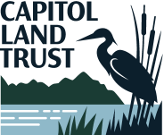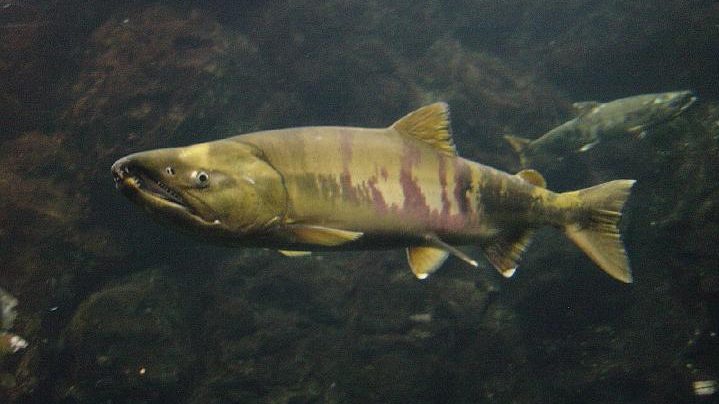Recently, we had the opportunity to visit several of Capitol Land Trust’s preserves and a property protected by the City of Olympia with a Washington Department of Fish and Wildlife (WDFW) Area Fisheries Biologist. This visit gave us a great chance to learn about the methods that WDFW uses to monitor salmon and ocean going trout populations. Monitoring our properties is an important part of our restoration and conservation work – good monitoring informs our work and allows us to make better decisions for future restoration work. Monitoring also enables us to show scientifically the conservation value of our protected properties and the ecological value of our restoration work. Once we conserve a property our work is just starting!
We visited Allison Springs and our Bayshore and Hilburn Preserve. Allison Springs is owned by the City of Olympia and Capitol Land Trust has worked with the City to restore the property.
Each fall a large number of chum salmon spawn at Allison Springs and it will be exciting to use WDFW monitoring protocols to track the salmon run!
Our next visit was to Bayshore Preserve north of Shelton on Oakland Bay. For the last year we have been working hard to restore the natural habitat along the tidal lands and Johns Creek. We recently hosted a number of Olympic Middle School 7th graders at Bayshore – The students completed a number of environmental studies tasks that helped us understand the impact of our restoration work. The next steps are to continue our restoration work and to implement the WDFW monitoring protocols which will help us better understand the impact of our work. And of course we will continue to host Olympic Middle School students at Bayshore!
Based on feedback from the meeting we are looking into implementing several monitoring tasks later this year and next. These tasks may involve chum salmon surveys, cutthroat trout redd surveys, small-scale electro-shock survey to determine which fish species are present and other similar in stream surveys. This information will give us a greater understanding of the biodiversity within the streams and creeks that flow through our preserves which will help us to make better management decisions to conserve and restore these critical habitats.
Monitoring is a fundamental part of good restoration and conservation work and it was great to get the opportunity to learn from WDFW about how to better monitor the impact our work has on the region’s fisheries. If you’re interested in helping us with our monitoring efforts, please feel free to contact us at info@capitollandtrust.org. We would love to have you join us at our preserves!

